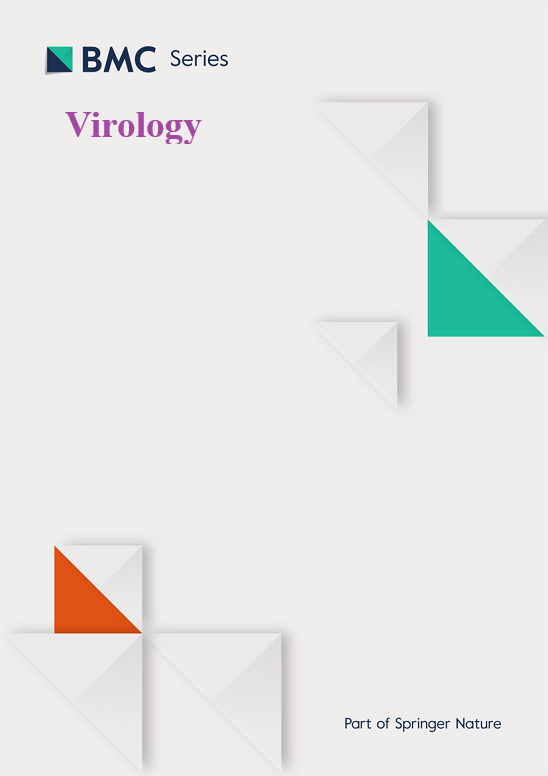不同基因组区域和亚型HIV-1传播聚类检测的阈值敏感性分析
IF 2.8
3区 医学
Q3 VIROLOGY
引用次数: 0
摘要
HIV-1聚类分析已被广泛用于表征HIV-1传播,一些国家已将这种分子流行病学作为其预防战略的一部分。然而,HIV-1序列来自不同的基因组区域,这影响了系统发育聚类的输出。在这里,我们应用不同的工具来运行灵敏度分析,以评估哪个阈值为不同的数据源提供最具凝聚力的聚类输出。我们使用了来自瑞士HIV队列研究的174个B亚型全长序列和来自南非公开的C亚型序列的数据集。每个数据集被分成亚基因组子数据集,包括gag、pol和env。pol进一步细分为HIV-1基因分型实验室常用的区域(pr-rt、rt-int和pr-rt-int)。对每个亚基因组区域进行聚类分析,在ClusterPicker中指定不同的距离阈值为0.5% - 4.5%,树枝支持度为70%,90%和99%。树拓扑和聚类输出相互比较,以评估聚类相似性。与gag和env相比,使用pol、pr-rt-int或rt-int的Pylogenies具有更健壮的树拓扑结构。聚类组成随遗传距离阈值的增加而变化,但不受枝支持的影响。所有亚基因组区域以及B和c亚型的聚类身份在遗传距离为2.5(±0.5)%时最为相似。我们的研究证明了在为聚类输出设置遗传距离阈值之前进行敏感性分析的价值,并且pol区域适合聚类输出,可用于近实时的HIV-1聚类检测。本文章由计算机程序翻译,如有差异,请以英文原文为准。
Threshold sensitivity analysis for HIV-1 transmission cluster detection using different genomic regions and subtypes
HIV-1 cluster analysis has been widely used in characterizing HIV-1 transmission and some countries have implemented such molecular epidemiology as part of their prevention strategy. However, HIV-1 sequences derive from varying genome regions, which affects phylogenetic clustering outputs. Here, we apply different tools to run a sensitivity analysis for assessing which threshold give the most cohesive clustering outputs for different data sources. We used a dataset of 174 full-length sequences of subtype B from the Swiss HIV Cohort Study and publicly available subtype C from South Africa. Each dataset was divided into sub-genomic sub-datasets covering gag, pol, and env. pol was further subdivided into regions commonly used in HIV-1 genotyping laboratories (pr-rt, rt-int, and pr-rt-int). Cluster analyses for each sub-genomic region was performed specifying varying distance thresholds of 0.5 %–4.5 % and tree branch support of 70 %, 90 % and 99 % in ClusterPicker. Tree topologies and clustering outputs were compared against each other to assess cluster similarity. Pylogenies using pol, pr-rt-int, or rt-int had more robust tree topologies compared to gag and env. Cluster composition changed with increasing genetic distance threshold but was not affected by branch support. Cluster identity was most similar around genetic distances of 2.5 (±0.5)% for all sub-genomic regions and for both subtype B and C. Our study demonstrated the value of performing a sensitivity analysis before setting a genetic distance threshold for clustering output and that the pol region is appropriate for clustering outputs and can be used for near real-time HIV-1 cluster detection.
求助全文
通过发布文献求助,成功后即可免费获取论文全文。
去求助
来源期刊

Virology
医学-病毒学
CiteScore
6.00
自引率
0.00%
发文量
157
审稿时长
50 days
期刊介绍:
Launched in 1955, Virology is a broad and inclusive journal that welcomes submissions on all aspects of virology including plant, animal, microbial and human viruses. The journal publishes basic research as well as pre-clinical and clinical studies of vaccines, anti-viral drugs and their development, anti-viral therapies, and computational studies of virus infections. Any submission that is of broad interest to the community of virologists/vaccinologists and reporting scientifically accurate and valuable research will be considered for publication, including negative findings and multidisciplinary work.Virology is open to reviews, research manuscripts, short communication, registered reports as well as follow-up manuscripts.
 求助内容:
求助内容: 应助结果提醒方式:
应助结果提醒方式:


